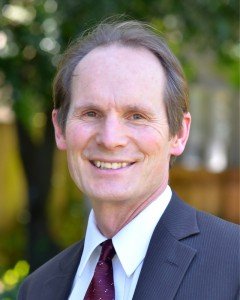By Mike Sandler and Barry Vesser
Published in the Press Democrat 2/13/12
In his inauguration speech, President Obama called for a response to climate change. While commendable that he put climate change back on the political agenda, he forgot the two most important words: carbon price. A carbon price will encourage businesses to make low-carbon investments, consumers to make low-carbon purchases, and the private sector to decide how best to implement the most cost-effective emissions reductions.
Carbon pricing is still a distant vision in Washington DC. Congress failed to pass a climate bill in 2010, and no serious effort has been made since. But California’s Global Warming Solutions Act (AB32) that passed in 2006 made carbon pricing real by including cap & trade in the law. The “cap” requires the State to reduce its emissions back to 1990 levels by the year 2020. “Trade” enables regulated companies to swap permits to meet those goals.
effort has been made since. But California’s Global Warming Solutions Act (AB32) that passed in 2006 made carbon pricing real by including cap & trade in the law. The “cap” requires the State to reduce its emissions back to 1990 levels by the year 2020. “Trade” enables regulated companies to swap permits to meet those goals.
Cap & trade launched on November 14, 2012, when California administered the first auction of greenhouse gas permits for industrial and electricity sectors. The auction raised $290 million.
How this money is spent will determine the success of the program. One major hazard is that social inequity will worsen. Low-income families spend a higher proportion of their income on necessities such as fuel and electricity, and so bear a bigger burden of increasing fossil fuel costs. If the auction revenue is spent exclusively on emission reduction projects, as many advocates espouse, social inequity becomes more pronounced, and arguments that a carbon price is a regressive tax and that cap & trade is a government cash cow are bolstered.
California should spend the auction revenue so that economic equity improves rather than worsens. One means of accomplishing this is by issuing climate dividends. This concept is based on the idea that the atmosphere performs a service by acting as a “sink” for greenhouse gas pollution. Up to present, this valuable service has been free to polluters. By marrying cap & trade with a climate dividend, polluters pay, and funds collected are returned to all Californians equally as compensation for the use of the sky, a common asset.
Recently the California Public Utilities Commission adopted a climate dividend policy for the part of the revenue generated in the electricity sector. In announcing its decision, the Commission wrote, “Returning revenues equally to all residential customers is more equitable and comports with the idea of common ownership of the atmosphere given that residential ratepayers will ultimately bear the increased costs as a result of the Cap-and-Trade program.” Although the dividends are small – between $40 and $80 per household per year – they are nonetheless a start. Californians should begin to see this money reflected on their utility bills this year.
In 2015, California’s cap & trade program will add the transportation sector, generating up to $6 billion per year. Depending on how auction revenues are spent, the economic bite on low and middle income families may become even more painful. In contrast, if dividends are issued, low and middle income people will be protected, the economy stimulated, and investment dollars steered toward clean energy.
In the next six months many interests will vie for a piece of the AB 32 revenue pie. We urge decision-makers in Sacramento to follow the Public Utility Commission example, keep the interests of average Californians in mind, and create a model which might help move the rest of the country toward adopting a carbon price.
Mike Sandler is a co-founder of the Climate Protection Campaign. From 2010-2012, he was the Program Manager at the Sonoma County Regional Climate Protection Authority. Mike manages a website on directing the value of emissions permits to people at www.carbonshare.org. Barry Vesser is the Deputy Director of Climate Protection Campaign.

